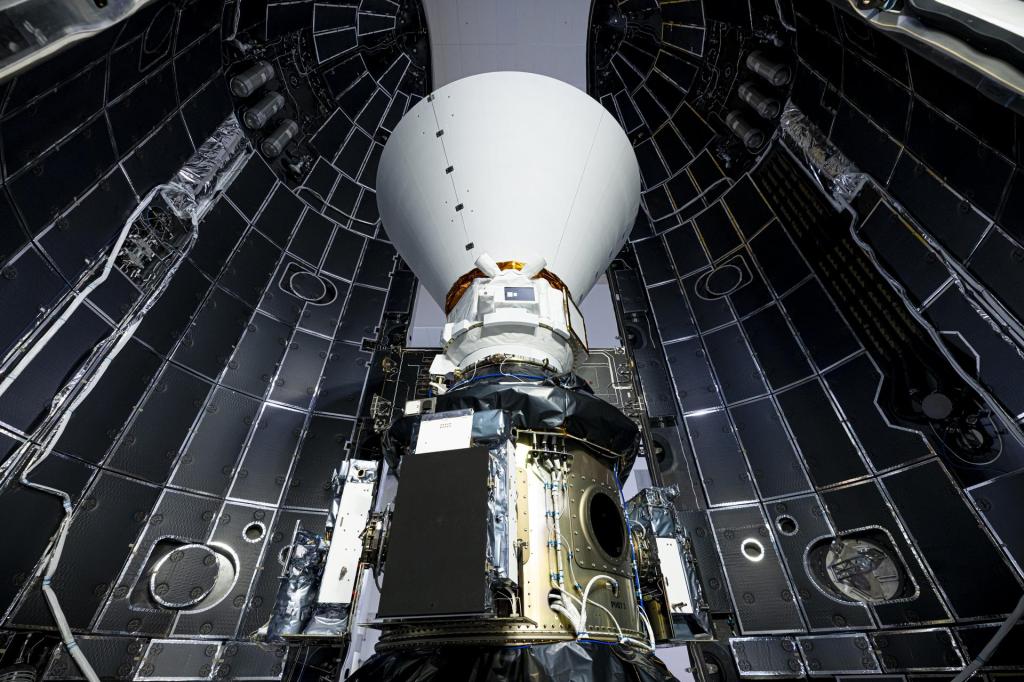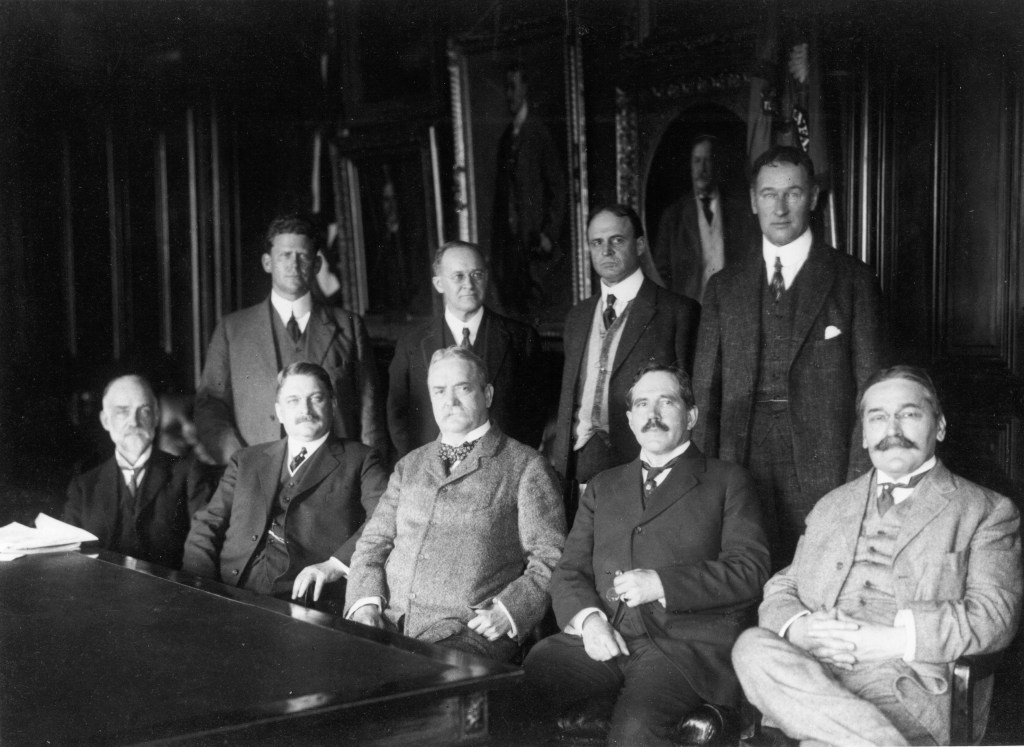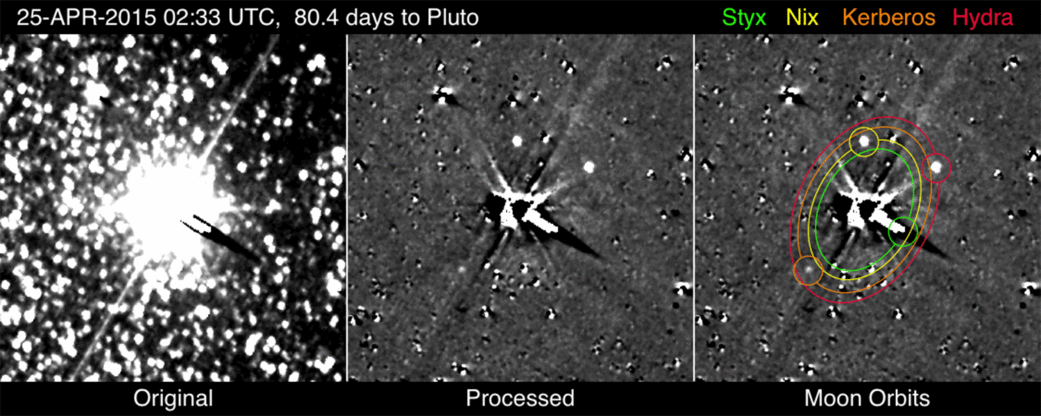It’s a complete Pluto family photo – or at least a photo of the family members we’ve already met.
For the first time, NASA’s New Horizons spacecraft has photographed Kerberos and Styx – the smallest and faintest of Pluto’s five known moons. Following the spacecraft’s detection of Pluto’s giant moon Charon in July 2013, and Pluto’s smaller moons Hydra and Nix in July 2014 and January 2015, respectively, New Horizons is now within sight of all the known members of the Pluto system.
“New Horizons is now on the threshold of discovery,” said mission science team member John Spencer, of the Southwest Research Institute in Boulder, Colorado. “If the spacecraft observes any additional moons as we get closer to Pluto, they will be worlds that no one has seen before.”
Drawing ever closer to Pluto in mid-May, New Horizons will begin its first search for new moons or rings that might threaten the spacecraft on its passage through the Pluto system. The images of faint Styx and Kerberos shown here are allowing the search team to refine the techniques they will use to analyze those data, which will push the sensitivity limits even deeper.
Kerberos and Styx were discovered in 2011 and 2012, respectively, by New Horizons team members using the Hubble Space Telescope. Styx, circling Pluto every 20 days between the orbits of Charon and Nix, is likely just 4 to 13 miles (approximately 7 to 21 kilometers) in diameter, and Kerberos, orbiting between Nix and Hydra with a 32-day period, is just 6 to 20 miles (approximately 10 to 30 kilometers) in diameter. Each is 20 to 30 times fainter than Nix and Hydra.
The images detecting Kerberos and Styx shown here were taken with New Horizons’ most sensitive camera, the Long Range Reconnaissance Imager (LORRI), from April 25-May 1. Each observation consists of five 10-second exposures that have been added together to make the image in the left panel. Images were extensively processed to reduce the bright glare of Pluto and Charon and largely remove the dense field of background stars (center and right panels). This reveals the faint satellites, whose positions and orbits – along with those of brighter moons Nix and Hydra – are given in the right panel.
“Detecting these tiny moons from a distance of more than 55 million miles is amazing, and a credit to the team that built our LORRI long-range camera and John Spencer’s team of moon and ring hunters,” added New Horizons Principal Investigator Alan Stern, of the Southwest Research Institute.
Kerberos is visible in all of the images, though is partially obscured in the second image. Styx is not visible in the first image, only in subsequent ones; on April 25 it was obscured by electronic artifacts in the camera – the black and white streaks extending to the right of the extremely overexposed images of Pluto and Charon in the center of the frame. These artifacts point in different directions in different images due to the varying orientation of the spacecraft. Other unlabeled features in the processed images include the imperfectly removed images of background stars and other residual artifacts.
Although Styx and Kerberos are more visible in some frames than others, perhaps due to brightness fluctuations as they rotate on their axes, their identity is confirmed by their positions being exactly where they are predicted to be (in the center of the circles in the right panel).
The Johns Hopkins University Applied Physics Laboratory (APL) designed, built, and operates the New Horizons spacecraft, and manages the mission for NASA’s Science Mission Directorate. SwRI leads the science team, payload operations and encounter science planning. New Horizons is part of the New Frontiers Program managed by NASA’s Marshall Space Flight Center in Huntsville, Alabama.




























